The 4.3L Vortec is a V6 gasoline engine produced by General Motors and is well-known for its balance between power and fuel management.
It was initially introduced as an alternative to V8 engines back in 1985, and now we see its different variants in the market, such as L35, LF6, LU3, etc.
But despite being considered a ‘reliable’ engine, many Chevy and GMC owners have complained that these engines sometimes lack power, misfire, idle roughly, or stall.
Based on my observations, these issues mostly happen due to the leaking intake manifold gasket, ICV/TPS failure, fragile distributor cap, carbon buildup in intake valves, etc.
In this article, we’ll discuss these potential weak points and the countermeasures you can take to solve them.
Chevy 4.3L Vortec Engine Overview
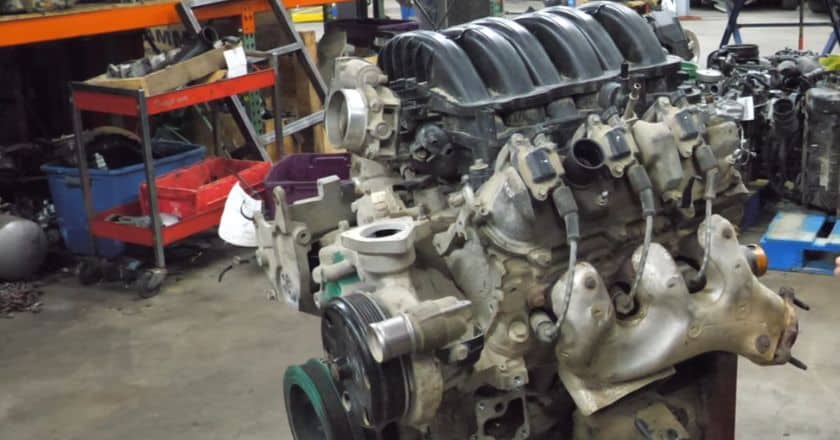
There are two popular 4.3L engines these days: LU3 and LV3.
The LU3 is the last variant of the 4.3L Vortec engine produced by GM in 2003-14 and was used in the Chevrolet Silverado 1500 and GMC Sierra 1500 (until 2014).
It gives you 195 horsepower @ 4600 RPM and 260 lb-ft torque @ 2800 RPM.
On the other hand, the LV3 is a successor to the 4.3 Vortec series, has been around since 2014, and is part of the new EcoTec3 engine series.
It has several improvements in the form of an aluminum body, direct fuel injection, and Variable Valve Timing (VVT).
The direct fuel injection system is a fuel delivery method that delivers fuel directly into the combustion chamber of each cylinder – resulting in smoother power delivery, improved fuel efficiency, and reduced emissions.
Similarly, the VVT allows the camshaft to automatically adjust the opening and closing of the intake and exhaust valves relative to the crankshaft position.
In the earlier engines, you had to manually adjust the cam timing to either advance or retard.
The ‘advance’ cam timing means opening and closing the valves earlier in the engine cycle, resulting in better top-end power but reduced low-end torque and idle stability.
The ‘retard’ cam timing means opening and closing the valves later in the engine cycle, resulting in better low-end torque and idle stability but reduced top-end power.
The VVT adjusts the valves to advance/retard by itself, depending on your operating conditions.
As for the raw power, the LV3 produces up to 285 horsepower @ 5300 RPM and 305 lb-ft of torque @ 3900 RPM, making it better for heavier loads.
You can check out our blogpost on the 4.3L and 4.3L Vortec differences for detailed information on this subject.
Chevy 4.3L Vortec Engine Problems
So, now that we have a brief overview of the 4.3 Vortec, it’s time to discuss some issues with this engine.
1. Idle Control Valve and Throttle Position Sensor
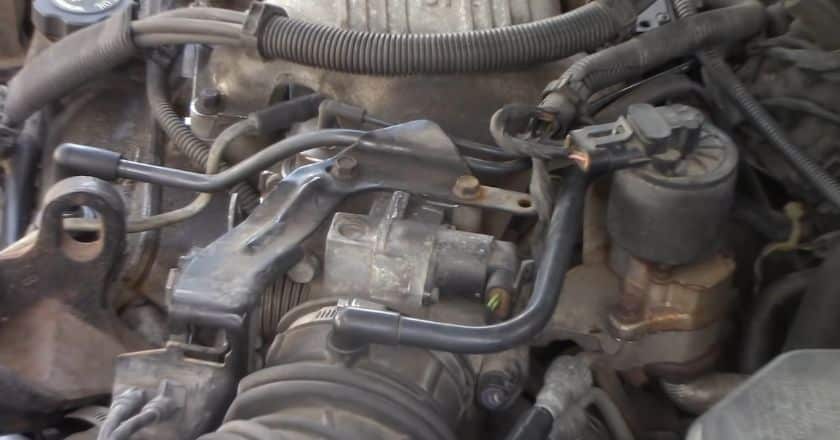
The Idle Control Valve (ICV) and Throttle Position Sensor (TPS) are crucial components in the engine’s fuel and air management system.
The ICV controls the amount of air that bypasses the throttle plate, which enables the engine to idle smoothly.
On the other hand, the TPS is a sensor that measures the position of the throttle valve in the throttle body, which controls the amount of air entering the engine.
Both of these components are prone to wearing/clogging in the 4.3L Vortec engines, which results in rough idling, hesitation, poor throttle response, or TPS error code.
As for the fix, you’ll either need to clean them (if clogged up by dirt/debris) or replace them (if broken).
2. Intake Manifold Gasket
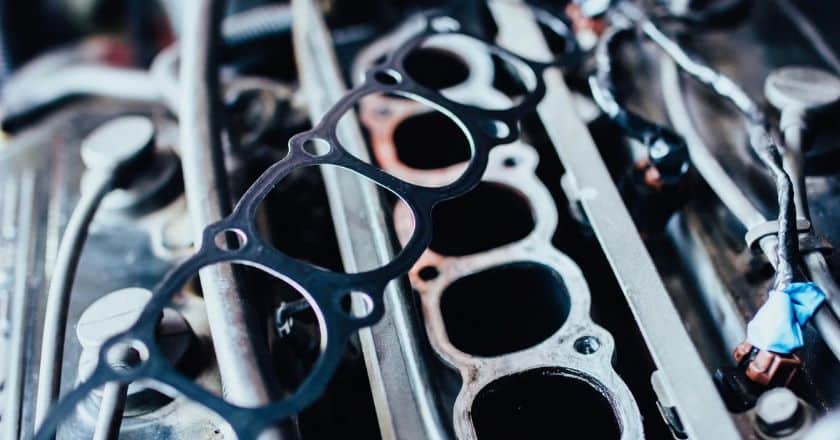
The intake manifold gasket is a seal that prevents air, fuel, and coolant from leaking between the intake manifold and the cylinder head.
The gaskets used in the older 4.3L Vortec LB4 and L35 engines were made of average-quality plastic, which (along with the engine design) would cause the gaskets to fail after 50,000-80,000 miles.
This failure would cause vacuum and coolant leaks, resulting in poor performance, rough idling, stalling, overheating, and increased fuel consumption.
Fortunately, GM has redesigned the gaskets and used better-quality material in the latter Vortec engines, making this issue slightly rare.
But if you have an older vehicle with an LB4/L35 engine, you’ll have to check the gasket set regularly and replace it if it looks damaged.
3. Distributor Cap
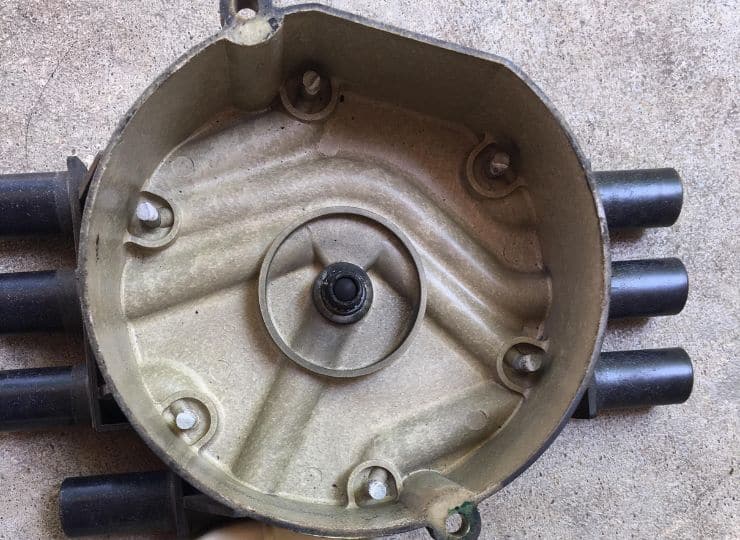
Another issue I’ve seen in the Vortec engines is the distributor cap.
This cap covers the distributor and rotor – helping transport the spark from the coil to the spark plugs.
Due to excessive heat, this cap warps and changes its original shape – or cracks in some cases. Thus, it fails to fully cover the distributor, which allows moisture and dirt to enter – resulting in corrosion.
This corrosion, in turn, can cause the engine to misfire and fail. If the engine is cranking, but the vehicle is not starting, the distributor or the cap can be the potential reason.
The best way to solve it is to upgrade to an aftermarket distributor with a higher-quality cap.
4. Spider Injector
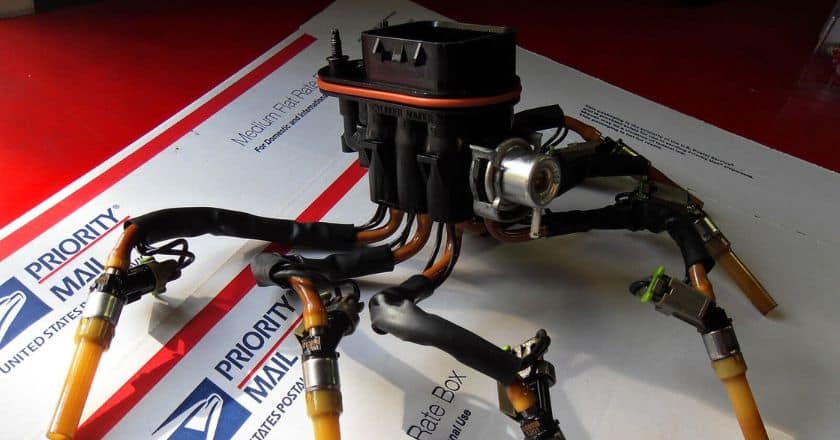
The older L35 and LF6 engines had a Central Port Fuel Injector (CPFI) system. Also known as a spider injector, this system had a central unit and fuel lines extending to individual poppet valves at each cylinder.
Although more efficient than the earlier systems, spider injectors are prone to reliability issues.
In many cases, the plastic fuel lines become brittle and crack over time, leading to fuel leaks and poor engine performance.
The common symptoms of bad spider injectors include rough idling at low RPMs and hard cranking.
The only way to fix this issue is to replace the complete injector set, as its internal components (O-rings, seals, plastic fuel lines, etc.) are not usually sold separately.
5. Excessive Oil Consumption
This problem exclusively happens in the AFM-enabled (Active Fuel Management) LV3 Vortec engines.
Active fuel management is designed to save fuel by deactivating some engine cylinders under light workloads and then reactivating them if the load gets heavier.
But for some unknown reasons, this system hasn’t been able to work like that in LV3 engines.
Many owners have complained about issues like excessive oil consumption, reduced engine power, and difficulty in downshifting – when the AFM is enabled.
You can somewhat minimize this issue by doing regular oil changes, replacing the spark plug (if required), and using high-quality fuel.
But If you want to disable the AFM altogether, you’ll need an aftermarket tuner or AFM disabler. I recommend you consult a dealership before taking the latter option, as it can void the warranty.
6. Carbon Buildup
Like in other engines with direct fuel injection systems, carbon deposits can form on the intake valves of the 4.3 Vortec LV3. These deposits can result in poor engine performance and increased emissions.
You’ll need proper engine maintenance and can catchers to prevent carbon buildup.
In case you already have this issue, you can try an intake valve cleaner, as shown in the video below:
Conclusion: Is Vortec 4.3 Reliable?
So, these are some issues you can have with the 4.3L Vortec engines.
Honestly, these issues are more of an aberration than the norm.
The 4.3L Vortec engines, particularly the LU3 and LV3, have earned the reputation of being dependable, long-lasting, and tailor-made for light/moderate towing.
It means you can minimize these risks to a great degree by simply doing proper maintenance and fixing any potential issue before it worsens into something serious.
Frequently Asked Questions
What Vehicles Have a 4.3 Vortec Engine?
Some popular vehicles to feature a 4.3L Vortec engine include the Chevrolet S-10, Cherrolet Silverado 1500, GMC Sierra 1500, GMC Yukon, etc.
How Many Miles Per Gallon Does a 4.3L Ecotec3 Get?
The fuel economy of an engine is difficult to estimate as it depends on several factors. Generally, the Ecotec3 engine gives you 17-18 mpg in the city and 22-24 mpg on highways.
What Year Did GM Make the 4.3 Vortec?
The 4.3L Vortec was first introduced back in 1985. Since then, this engine has had different versions, such as LB1, L35, LF6, LU3, etc.
How Many Miles Will a 4.3 Vortec Last?
Like any other engine, the longevity of the 4.3 Vortec will depend on factors like driving conditions and maintenance. It should last more than 200,000 miles on average before getting any severe issues. Some people manage to get past even the 300,000-mile mark.
What is the Best Year 4.3 Chevy Engine?
The LB4 (1986-1995) is considered by many to be the best 4.3 Vortec engine.

I have a 1991 k1500 with the non vortec and its still running good with 263,000 just the minor stuff, belt, thermastat, and tune ups on a regular basis, and first r and r of factor clutch.
Seems like you’ve been diligent in maintaining it with regular tune-ups, Mike. This level of care likely contributes to its longevity.